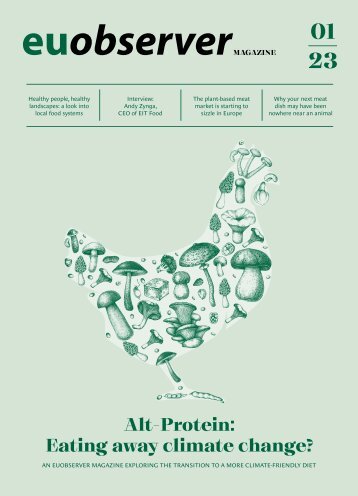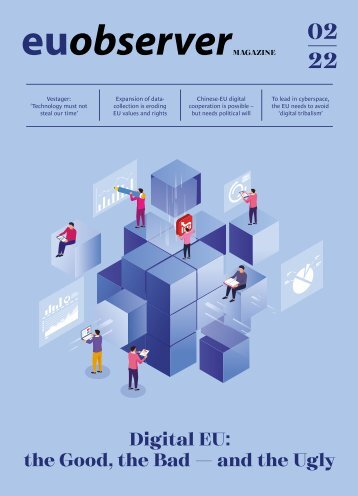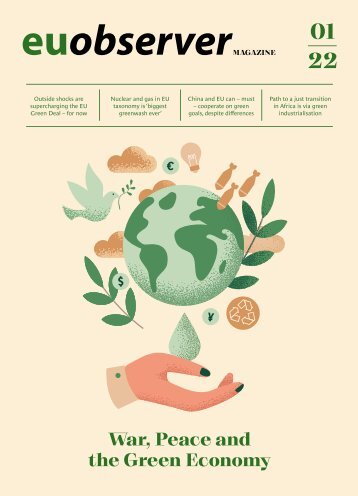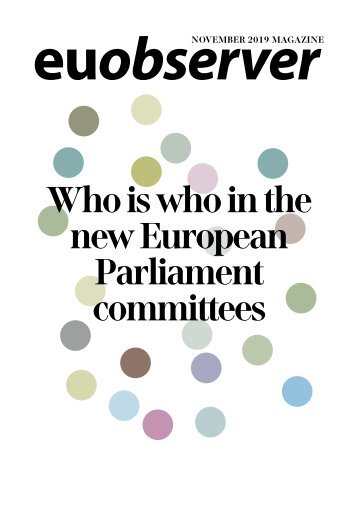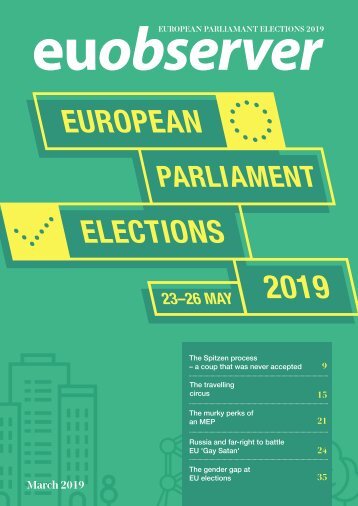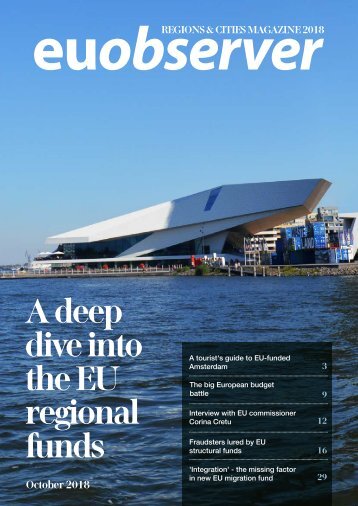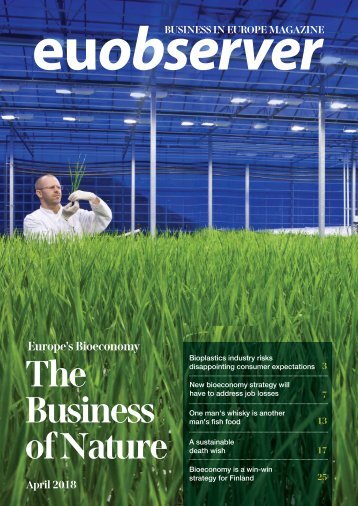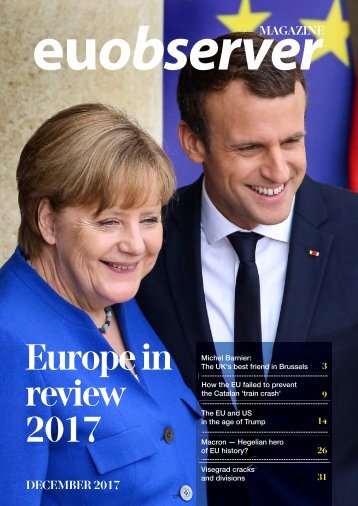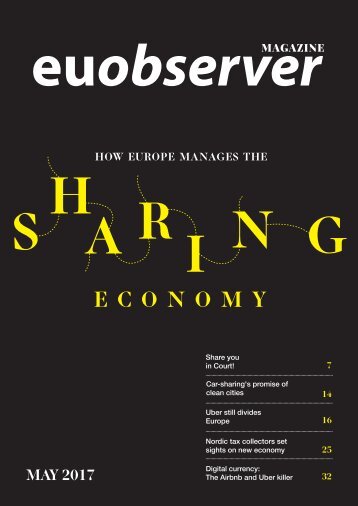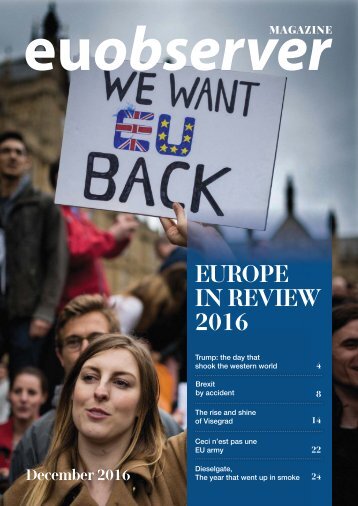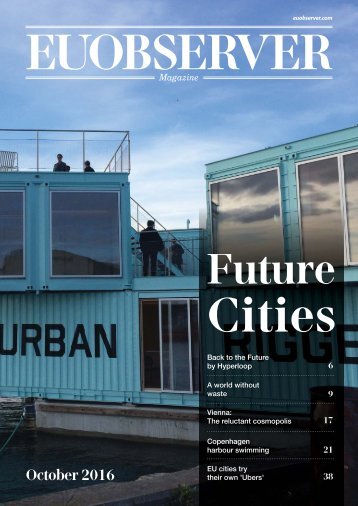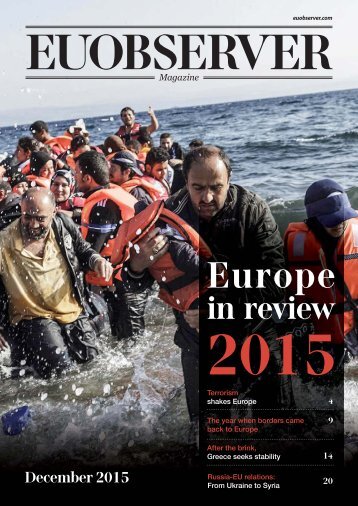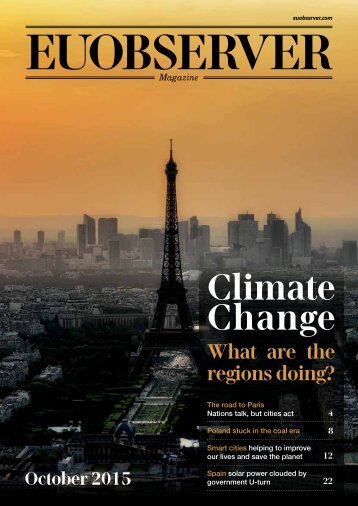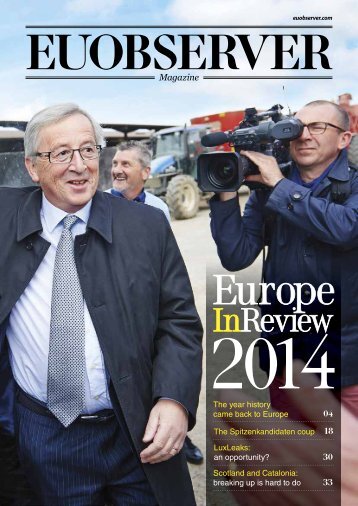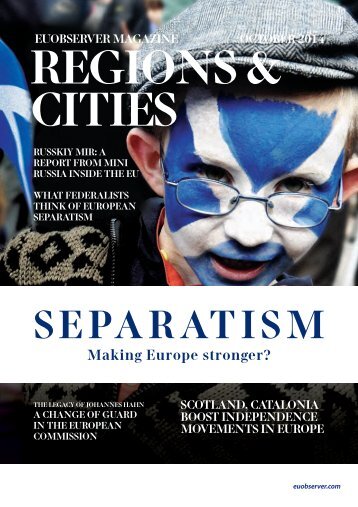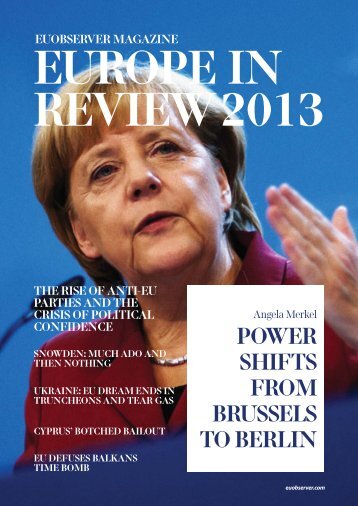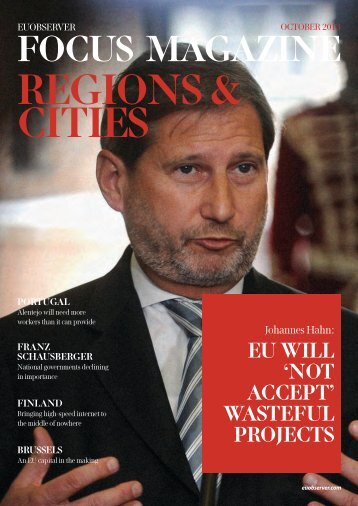Regions & Cities 2018: A deep dive into the EU regional funds
- Text
- European
- Regions
- Funds
- Cohesion
- Cities
- Regional
- Countries
- Euobserver
- Funding
- Eastern
Mihaly Fazekas describes
Mihaly Fazekas describes what happens when a corrupt elite gets its hands on large EU funds: 'If you have a friend who happens to build stadiums, you will build a stadium' Photo: European Commission Fraudsters lured by EU structural funds It's the job of the European Anti-Fraud Office to investigate any corruption and embezzlement of EU-funded projects. But why are structural funds in particular so attractive to criminals? By Peter Teffer The leader of Romania's Social Democrat party maintains he is innocent. But, according to Romania's National Anticorruption Directorate (DNA), Liviu Dragnea created an organised criminal group and defrauded EU structural funds. Romania's fraudbusters had help in their case from the Brussels-based European Anti-Fraud Office (Olaf). "Olaf conducted thorough investigations that we hope will have a strong deterrent effect," said the office's then acting director-general Nicholas Ilett in November 2017, when the accusation of the DNA was announced Whether that deterrent effect will occur remains to be seen. If proven, the Dragnea case - which is still ongoing - would only be one of many examples of the EU's regional support fund being hit by fraud last year. "Fraud involving EU structural funds remained at the core of Olaf's investigative work in 2017," the office said in its annual report By the end of last year, 73 of Olaf's 362 ongoing investigations were specifically on structural funds – making it the largest category four years in a row. Other annual reports, by the European Commission, also indicate that cohesion funds are a significant target for criminals. Why is that? Part of it has to do with the fact that regional support simply makes up a large share of the EU budget, Ilett told EUobserver in June, when he was still acting director-general of Olaf. Some correlation between amount of spending and level of fraud is to be expected. "Of course it is more complex than that. It's also inherent in the nature of the spending," he said. 16 — REGIONS & CITIES 2018
'Some member states will not qualify a situation as fraudulent until they've at least got an indictment, if not a conviction. Others will look at the file and say: this is clearly fraud, and tick it as fraud,' says Olaf's Nicholas Ilett Photo: European Commission "There is a system of shared management and that also can constitute a risk. Because there are more people involved in the decision-making process and you can have decisions taken quite locally, where there may sometimes be a risk of a lack of control, and a risk of patronage, nepotism, corruption at the local level," noted Ilett. Mihaly Fazekas, researcher at Cambridge University, agreed, and pointed to the large amount of discretion given to local and regional authorities in distributing the EU funds. "If you have a corrupt elite, discretion is good," the researcher told EUobserver. "If you have a friend who happens to build stadiums, you will build a stadium even if the village has no football club which is in the first league or no one watches football." PARADOX Fazekas is more of an expert on corruption than on fraud, but the two issues are closely related. He noted that the plethora of administrative requirements for recipients of EU funds have an adverse affect. "While bureaucratic controls try to decrease corruption, inadvertently they make market entry harder – reduce the number of bidders, hence make corruption more likely," said Fazekas. How much money is actually being defrauded from the annual EU budget for cohesion policy – and whether the problem is increasing – is hard to determine, according to Olaf's Ilett. "It's very difficult to measure over time. It's one of the things we know that we don't know," he noted. The commission's Protection of the European Union's financial interests reports, or Pif reports, give some indication. The report on 2017 said that EU member states reported a total of €320m of cohesion policy and fisheries funding as fraudulent irregularities. The 2016 figure was €237m, also for cohesion policy and fisheries combined. In 2015, when cohesion policy was still counted separately, member states reported €477m in fraudulent irregularities. But Olaf's Ilett said the figures needed to be interpreted cautiously because there is no harmonised approach. "The trouble with the PIF report figures is that it contains what the member states have declared, and within that there is a category of what they think is fraudulent," he said. "Some member states will not qualify a situation as fraudulent until they've at least got an indictment, if not a conviction. Others will look at the file and say: this is clearly fraud, and tick it as fraud." 17 — REGIONS & CITIES 2018
- Page 1 and 2: REGIONS & CITIES MAGAZINE 2018 A de
- Page 3 and 4: A tourist's guide to EU-funded Amst
- Page 5 and 6: Noorderpark: €33m Photo: Peter Te
- Page 7 and 8: than a national one? - was somethin
- Page 9 and 10: The big European budget battle— w
- Page 11 and 12: the EU to have the ability to tax i
- Page 13 and 14: Most of the regions have been funde
- Page 15: Commissioner Corina Cretu: 'We have
- Page 19 and 20: Romania receiving structural funds,
- Page 21 and 22: Tug of war between 'top -down' and
- Page 23 and 24: framework, which will weaken cohesi
- Page 25 and 26: Scotland's remote regions, like in
- Page 27 and 28: Cohesion policy projects in Romania
- Page 29 and 30: 'Integration' -the missing factor i
- Page 31 and 32: The second biggest headache is maki
Inappropriate
Loading...
Mail this publication
Loading...
Embed
Loading...

